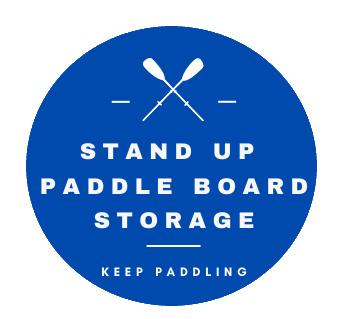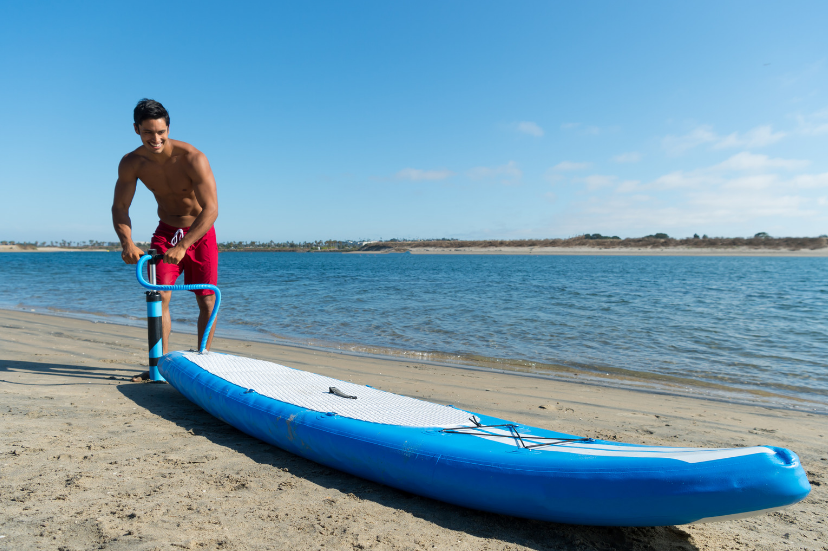Stand up paddleboarding (SUP) has exploded in popularity in recent years, with more and more people taking up the sport every day. With this surge in interest comes a wide range of options for paddle boards, including inflatable stand up paddle boards (iSUPs) and hard boards.
Inflatable SUPs have gained popularity due to their portability and convenience. They can be deflated and rolled up into a compact size, making them easy to transport and store. They’re also more affordable than hard boards and offer greater versatility, making them an ideal option for recreational paddling and exploring.
On the other hand, hard boards are known for their performance and speed. They’re typically made from materials such as fiberglass or epoxy, which provides a stiff and responsive ride. They’re also available in a variety of shapes and sizes, which makes them ideal for high-performance activities such as racing and surfing.
If you’re new to paddleboarding or looking to purchase a new board, you may be wondering which type of board is right for you. In this post, we’ll compare the pros and cons of iSUPs and hard boards to help you make an informed decision.
Performance
When it comes to performance, both inflatable stand up paddle boards (iSUPs) and hard boards have their advantages and disadvantages.
Hard boards are known for their stability and speed, which makes them ideal for high-performance activities such as racing and surfing. They’re typically made from materials such as fiberglass or epoxy, which provides a stiff and responsive ride. Hard boards are also available in a variety of shapes, including long, narrow boards for speed and shorter, wider boards for stability.
On the other hand, iSUPs are generally more versatile and user-friendly. They’re typically wider and thicker than hard boards, which makes them more stable and easier to balance on. They’re also easier to maneuver, which makes them great for recreational paddling and exploring. Inflatable paddle boards are made from durable materials such as PVC, drop-stitch construction, and reinforced rails that offer a stiff, responsive ride similar to that of a hard board.
Recently, there have been significant advancements in iSUP technology, which has made them more comparable to hard boards in terms of performance. For example, many iSUPs now feature streamlined shapes, which allow them to glide through the water more efficiently. Additionally, some iSUPs feature carbon fiber stringers or reinforced rails, which add stiffness and responsiveness to the board. These features have made it possible for iSUPs to be used for high-performance activities such as racing and surfing.
That being said, hard boards still have an edge in terms of speed and stability. If you’re looking to race or surf competitively, a hard board may be the better option. However, for most people, an iSUP is more than sufficient for casual paddling and exploring. Plus, iSUPs offer the added benefit of being more portable and easier to store than hard boards.
Cost of Inflatable Stand Up Paddle Boards vs. Hard Boards
One of the biggest advantages of iSUPs over hard boards is their lower cost. iSUPs tend to be less expensive than hard boards, especially when you factor in the cost of accessories like paddles and fins. Additionally, iSUPs don’t require expensive transportation or storage, as they can be deflated and stored in a small bag. On the other hand, hard boards tend to be more durable and may require less maintenance over time, which could ultimately make them more cost-effective in the long run.
Maintenance
When it comes to maintenance, iSUPs are generally easier to care for than hard boards. iSUPs don’t require waxing or oiling, and they can be easily cleaned with soap and water. They also don’t require as much storage space, as they can be deflated and stored in a small bag. Hard boards, on the other hand, require more maintenance, as they need to be waxed or oiled regularly to maintain their performance. They also require more storage space and can be more difficult to transport.
Transport and Storage
Another advantage of iSUPs over hard boards is their portability. iSUPs can be deflated and rolled up into a small bag, making them easy to transport in a car or on a plane. They’re also easier to store, as they don’t require as much space as hard boards. Hard boards, on the other hand, are more difficult to transport, as they require a roof rack or other specialized equipment. They also require more storage space, which can be a challenge for those with limited storage.
Final Strokes
In conclusion, the choice between an iSUP and a hard board ultimately comes down to your specific needs and preferences. If you’re looking for a more high-performance board for racing or surfing, a hard board may be the better option. However, if you’re looking for a more affordable and convenient board for casual paddling or travel, an iSUP may be the better choice. Ultimately, both types of boards have their pros and cons, and the decision will depend on your individual needs.



Recent Comments